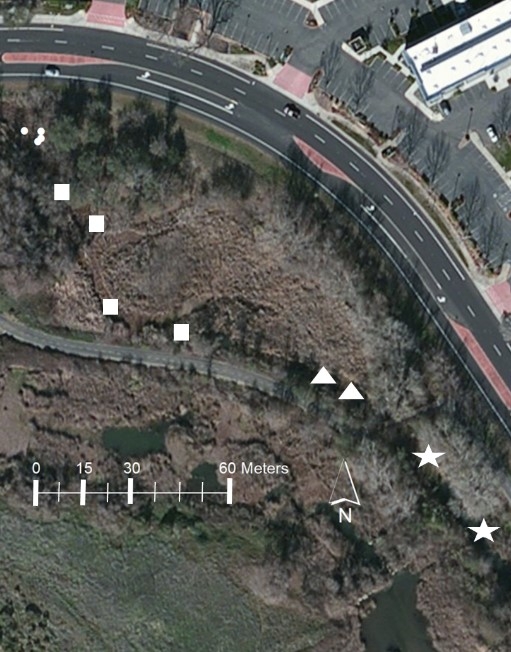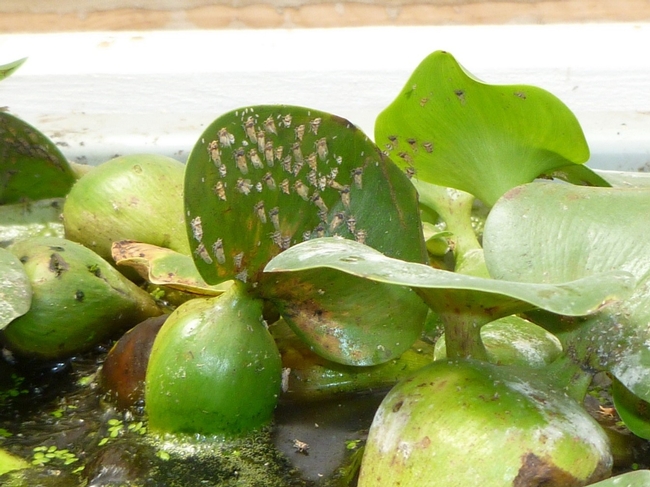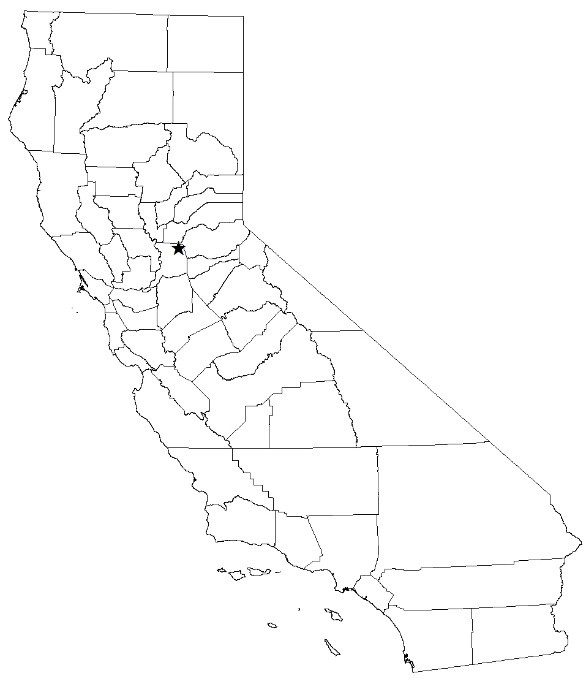A recent USDA-CDFA collaboration has documented the first establishment of a population of the water hyacinth planthopper in the western U.S.
The water hyacinth planthopper (Megamelus scutellaris, Order Hemiptera) is found on water hyacinth throughout tropical and sub-temperate areas in eastern and central South America. The USDA-Agricultural Research Service (ARS) first learned of this insect in Argentina and has worked with it there and at the USDA-ARS lab in Ft. Lauderdale, Florida.
Lab testing demonstrated that the planthopper can feed and reproduce only on water hyacinth, and that just two generations of feeding can reduce plant biomass by up to 70%. Planthoppers start out as eggs, go through 5 immature ‘nymph' stages, and then molt to the adult stage. Most adults have short, nonfunctional wings, but get around easily by hopping many times their length. Long-winged adults can both hop and fly and also contribute to dispersal.
The planthopper is widely established in Florida and has also been released in Texas and Louisiana. Until 2011, however, it had never been released in the western U.S. That year, two scientists with the California Department of Food and Agriculture (Dr. Baldo Villegas, now retired, and Dr. Michael Pitcairn, Senior Environmental Scientist and Supervisor) got a permit from the USDA-APHIS and released a few thousand planthoppers at three sites, including a pond on City of Folsom-owned land that feeds into Willow Creek, which drains into the American River at Natoma Reservoir. The American River drains into the Sacramento River in Sacramento.

The initial release did not take, but additional releases of about 30,000 planthoppers by Dr. Patrick Moran in 2012 led to establishment of a permanent population at the site. The planthopper spread about 180 ft (50 m) per year between 2013 and 2015, eventually occupying the entire pond adjacent to Willow Creek. During spring and summer surveys, the insects could be seen hopping from plant to plant everywhere on the pond. At the point of the original release, the proportion of live water hyacinth leaves decreased by 27% between 2012 and 2015 observations, and live biomass per plant also decreased slightly.
Cool winter conditions in 2015-2016 knocked back both the water hyacinth and planthopper populations. Surveys in 2016 will determine whether the planthopper has jumped a levee and made it into Willow Creek and downstream about a mile to Lake Natoma, and will also examine the continuing impact of the planthopper in the pond.
Results so far are detailed in: Moran PJ, Pitcairn MJ, and Villegas B. 2016. First establishment of the planthopper Megamelus scutellaris Berg 1883 (Hemiptera: Delphacidae) released for biological control of water hyacinth in California. Pan-Pacific Entomologist 92(1):32-43.

